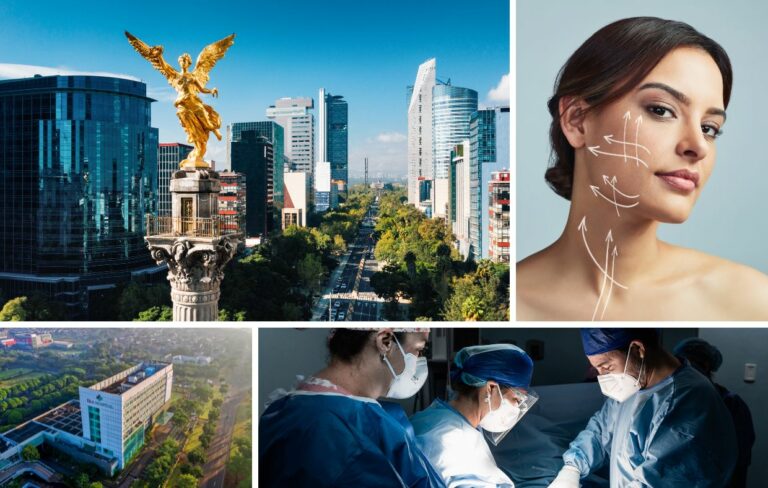Book Appointment Now

Ear Lifts (aka Otoplasty) in Colombia: Surgery, Recovery, Results
Considering a cosmetic procedure to enhance the appearance of your ears? Look no further than Colombia, a country that has gained a stellar reputation for its affordable and high-quality otoplasty surgeries. Otoplasty, commonly referred to as an ear lift, is a cosmetic surgery that enhances the appearance and function of the ears.
Learn everything from the otoplasty surgery itself, the recovery process, and the expected results. Whether you’re curious about the benefits, the step-by-step surgical process, or how to choose the right surgeon in Colombia, we’ve got you covered. Plus, we’ll explore the cost-effective nature of undergoing such a procedure in Colombia and share insights from individuals who have experienced the transformative effects of otoplasty firsthand.
Ready to start your transformation? Book your free virtual consultation today with SCCP-certified surgeons in Colombia and discover why over 30% of otoplasty patients choose Colombia for their procedure.
What is otoplasty surgery (ear lift) in Colombia?
Otoplasty, or cosmetic ear surgery, procedure cosmetic surgery aimed at altering the shape, size, or position of the ears. In Colombia, this procedure is renowned for its combination of affordability and high-quality medical expertise. Surgeons in Colombia use different methods, such as ear pinning and reshaping, to achieve the desired appearance for patients.
The process includes a consultation, surgery under anesthesia, and a recovery period guided by experienced professionals. Colombia’s prominence in the medical tourism sector underscores its commitment to providing accessible, safe, and satisfying outcomes for individuals seeking cosmetic enhancements like otoplasty.
What are the benefits of undergoing otoplasty in Colombia?
The cost-effectiveness and high caliber of medical care associated with otoplasty in Colombia are two of its many advantages. Colombia’s healthcare professionals are celebrated for their expertise in cosmetic surgery, ensuring that patients receive aesthetic enhancements that significantly boost their confidence and satisfaction with their appearance. Moreover, Colombia’s medical facilities are equipped with state-of-the-art technology, ensuring a safe and comfortable environment for patients.
What are the aesthetic enhancements of otoplasty?
Otoplasty significantly enhances aesthetic appeal by reshaping, resizing, or repositioning the ears to achieve a more balanced and harmonious look. It effectively corrects issues such as protruding ears, large or asymmetrical ear shapes, and other irregularities, leading to improved facial symmetry and proportion. This cosmetic procedure notably boosts individuals’ confidence and satisfaction with their appearance.
What are the functional improvements of otoplasty?
Beyond its aesthetic benefits, otoplasty also offers functional improvements, particularly for individuals with congenital ear deformities or those who have experienced injuries. While its primary focus is on structural correction, it can indirectly improve hearing by optimizing the ear’s shape to better capture sound waves. Additionally, it can alleviate discomfort associated with wearing glasses or headphones, making daily activities more comfortable for some individuals.
What factors should you consider when selecting a surgeon for otoplasty in Colombia?
Selecting the right surgeon in Colombia for otoplasty requires evaluating key factors. First and foremost, certification and experience are crucial; it’s crucial to make sure the surgeon has a wealth of experience performing otoplasty. Reviewing before-and-after photos of previous surgeries can offer valuable insights into the surgeon’s skill and the types of results they consistently achieve.
Additionally, reading patient testimonials is crucial for understanding levels of satisfaction and personal experiences with the surgeon. Scheduling a consultation is also a vital step, as it allows you to assess the surgeon’s approachability, their understanding of your needs, and their ability to communicate effectively about the procedure. Lastly, the quality of the facility where the surgery will be performed should not be overlooked.
Importance of certification and experience
Certification and experience stand as the pillars of selecting a surgeon for otoplasty. Certification by reputable medical boards ensures that the surgeon has met high standards of training and practice. It’s a testament to their competence and professionalism in the field.
Experience provides insight into the surgeon‘s practical skills and their ability to handle the complexities of otoplasty procedures. It reflects a history of successful surgeries and a deep understanding of patient care. Together, these elements are indispensable in ensuring that the surgeon is capable of delivering safe, effective, and personalized care, aiming for the best possible aesthetic outcomes.
How is otoplasty performed in Colombia?
In Colombia, otoplasty begins with a comprehensive consultation to clearly understand the patient’s aesthetic desires. Surgeons, backed by their certification and extensive experience, devise a tailored surgical approach. The procedure is typically carried out under local or general anesthesia, prioritizing patient comfort.
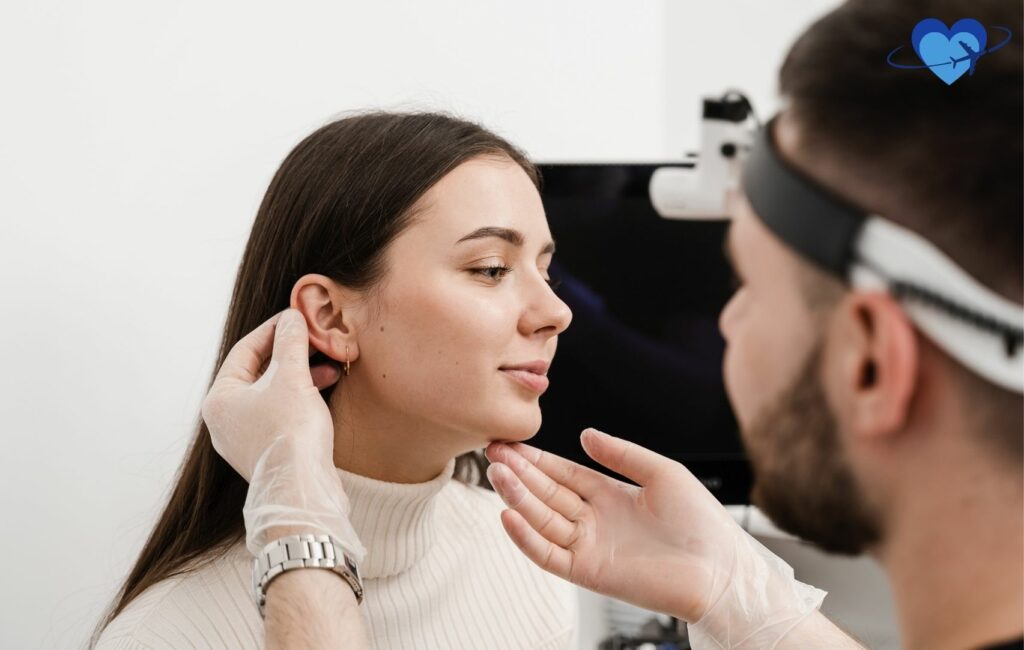
Utilizing state-of-the-art techniques, surgeons reshape or resize the ear’s cartilage, with incisions made in strategically hidden locations to reduce visible scarring. The operation concludes with the careful placement of sutures to secure the ear’s new contour. The healthcare facilities in Colombia, which are renowned for their high safety standards and dedication to patient satisfaction, serve as a reminder of this entire process.
What are the pre-operative assessments for otoplasty?
Pre-operative assessments for otoplasty involve a thorough evaluation to ensure patient safety and optimal surgical outcomes. Key components include a detailed medical history review, a physical examination of the ears, and discussions about aesthetic goals. Imaging tests such as CT scans or detailed photographs may also be conducted to provide a detailed analysis of the ear’s structure, aiding in precise surgical planning.
Common preoperative tests in Colombia include:
- Blood tests: To check for any conditions that might complicate surgery.
- Audiometry: Assessing hearing to understand the functional baseline before surgery.
What are the primary types of otoplasty techniques in Colombia?
Colombian surgeons employ advanced hybrid techniques that combine traditional methods with modern innovations for superior results:
Traditional Surgical Techniques
- Mustardé Technique: Creates the antihelical fold using non-absorbable sutures, ideal for patients lacking this natural fold
- Furnas Technique: Reduces ear protrusion by suturing the conchal cartilage to the mastoid fascia
- Cartilage Scoring Methods: Precise weakening of cartilage to allow natural reshaping without visible scarring
Advanced Colombian Techniques
- Ear Pinning (Otopexy): Reducing the angle between the ear and the head for ears that protrude significantly using hybrid suturing techniques
- Antihelical Fold Manipulation: Precise cartilage reshaping to create natural-looking ear contours
- Conchal Cartilage Reduction: Reducing excessive bowl-shaped cartilage for better ear positioning
- Internal vs. External Suture Placement: Strategic suture positioning to minimize visible scarring
Suturing Methods Used in Colombia
- Permanent Sutures: Non-absorbable materials for long-lasting results in structural support
- Dissolvable Sutures: Used for skin closure, eliminating need for suture removal appointments
- Mattress Suturing: Creates secure, even tension distribution across cartilage
- Horizontal Mattress Technique: Specific for antihelical fold creation with minimal tension
Colombian surgeons achieve a low recurrence rate of 1.7-5% through these advanced techniques, compared to higher rates with traditional methods alone.
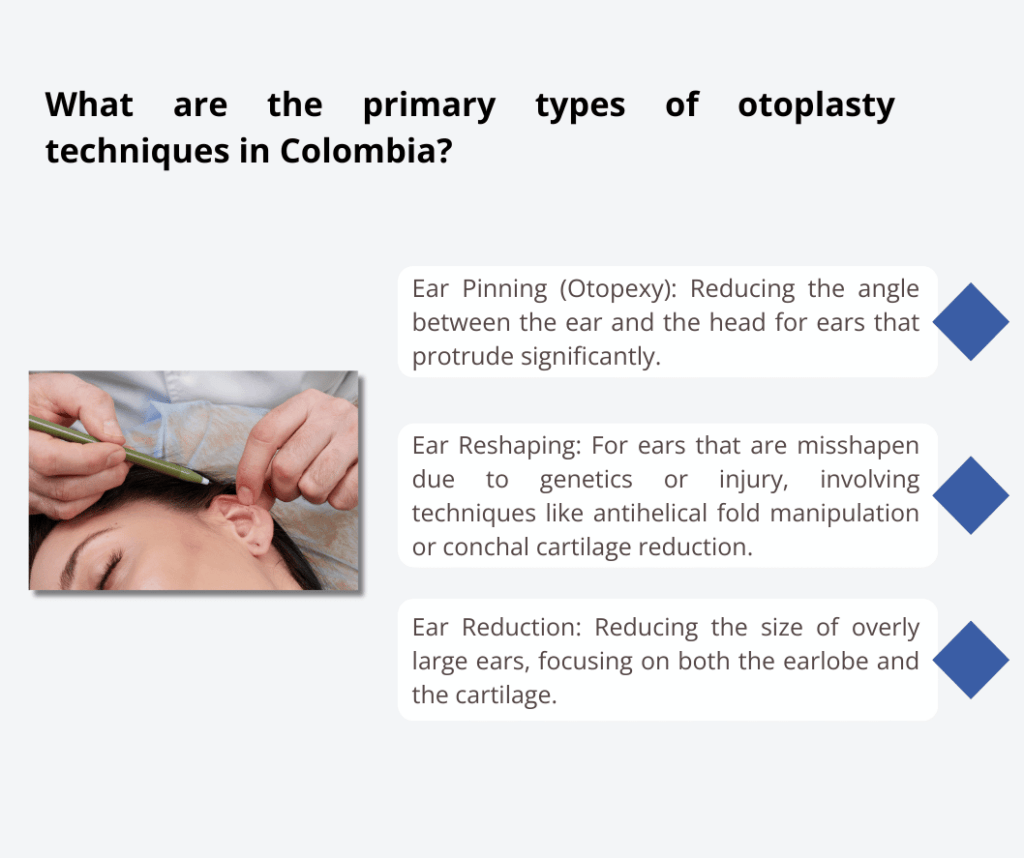
What are the anesthesia options for otoplasty in Colombia?
Anesthesia options for otoplasty in Colombia typically include:
- Local Anesthesia with Sedation: Used for less complex procedures, allowing the patient to be comfortable and pain-free while awake.
- General Anesthesia: Recommended for more extensive reshaping, where the patient is asleep during the procedure.
The choice of anesthesia is determined based on the procedure’s complexity, the patient’s health, and personal comfort levels.
What is the step-by-step process of the ear lift surgery?
The ear lift surgery process in Colombia unfolds as follows:
- Consultation and Planning: Detailed discussion of the desired outcome and surgical plan.
- Anesthesia Administration: Based on the chosen method, ensuring patient comfort.
- Incision: Typically behind the ear to access the cartilage for reshaping.
- Reshaping: The cartilage is sculpted, and excess skin may be removed.
- Suturing: The incisions are closed with sutures that may dissolve or require removal.
- Recovery: Initial recovery involves bandaging and monitoring for complications.
This detailed approach, combined with Colombia’s advanced medical practices, ensures a high success rate and patient satisfaction with otoplasty procedures.
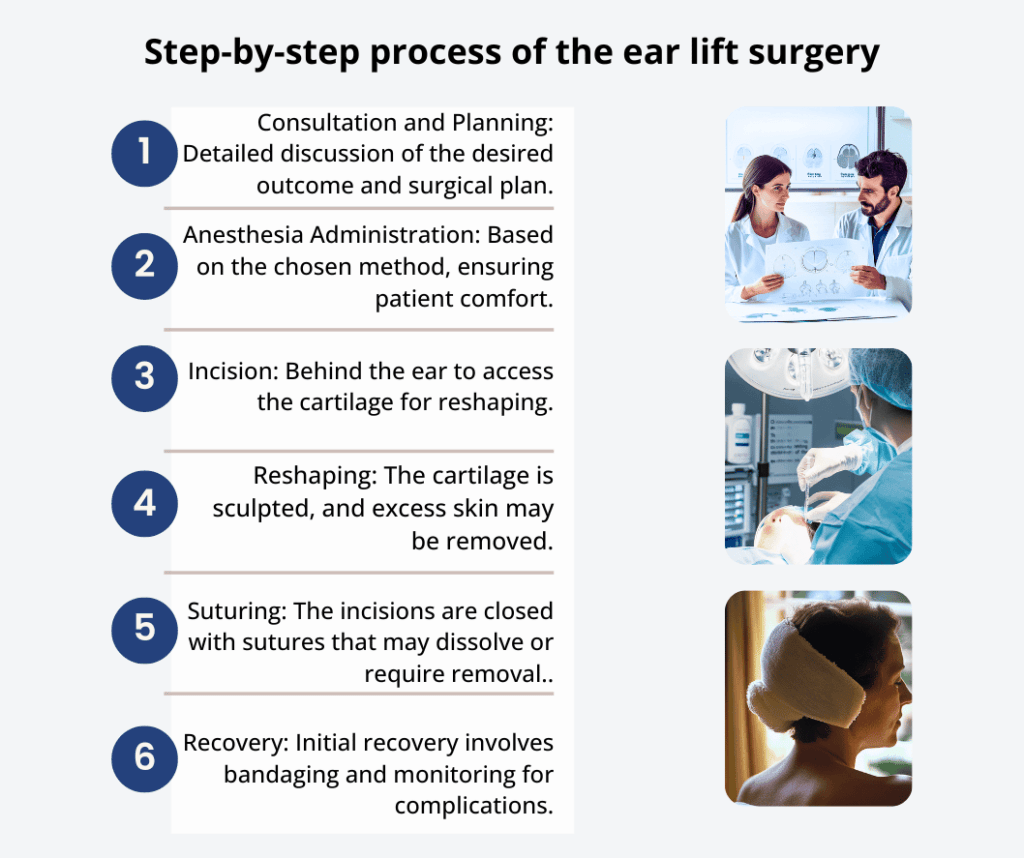
What are the alternative otoplasty techniques available in Colombia?
Beyond traditional surgical otoplasty, Colombian surgeons offer several minimally invasive alternatives designed to meet different patient needs and preferences. These innovative techniques provide options for those seeking less invasive procedures with reduced recovery times.
Thread Otoplasty (Otoplastia con Hilos Tensores)
Thread otoplasty is a minimally invasive technique that uses specialized medical threads to reposition prominent ears. The procedure involves:
- Duration: 15-60 minutes for both ears
- Anesthesia: Local anesthesia only
- Recovery: 1-3 days with minimal downtime
- Results: Temporary to semi-permanent (lasting several years)
- Cost: More economical than traditional otoplasty
This technique is offered by SCCP-certified plastic surgeons in Colombia, such as Dr. Marco Martínez and Dr. Guevara in Bogotá. It’s ideal for patients with mild ear prominence who want to “test” the aesthetic outcome before committing to permanent surgical correction.
Incisionless Otoplasty
Incisionless otoplasty techniques minimize visible scarring by using specialized suturing methods to reshape the ear cartilage without traditional incisions. This approach is particularly popular among patients concerned about scarring and those seeking a quicker recovery period.
Male-Specific Otoplasty Considerations
Colombian surgeons recognize that male patients often have unique aesthetic goals and concerns. Leading clinics offer specialized “Otoplastia Masculina” programs that focus on:
- Creating natural-looking results that maintain masculine aesthetics
- Avoiding an “over-corrected” appearance
- Achieving subtle corrections that enhance facial harmony
- Implementing the “Cultura de Paciente Seguro®” (Safe Patient Culture®) approach
Surgeons like Dr. Juan Carlos Monroy in Bogotá specialize in male otoplasty, understanding the specific concerns and aesthetic preferences of male patients.
Specialized Otoplasty Procedures in Colombia
Beyond traditional ear correction, Colombian surgeons offer specialized procedures for unique patient needs:
Earlobe Repair and Reconstruction
Earlobe repair is distinct from traditional otoplasty and addresses:
- Torn or split earlobes – From trauma or heavy earrings
- Gauge repair – Closing large holes from ear stretching/plugs
- Keloid scar treatment – Addressing excessive scar tissue formation
- Earlobe reduction – Reducing oversized or elongated earlobes
These procedures are typically performed under local anesthesia with minimal downtime and can often be combined with traditional otoplasty.
Pediatric Otoplasty Considerations
Pediatric otoplasty in Colombia requires specialized expertise:
- Age Requirements – Typically performed after age 5-6 when ear cartilage has developed sufficiently
- Anesthesia Considerations – Specialized pediatric anesthesiology teams
- Psychological Assessment – Ensuring the child understands and wants the procedure
- Growth Considerations – Accounting for continued facial development
- Post-operative Care – Specialized child-friendly recovery protocols
Revision Otoplasty
Revision otoplasty addresses unsatisfactory results from previous surgeries:
- Common Issues – Asymmetry, overcorrection, undercorrection, or unnatural appearance
- Recurrence Cases – When ears gradually return to their original position (4% risk)
- Technical Challenges – Navigating scar tissue and altered anatomy
- Specialist Surgeons – Dr. David Delgado (Medellín) and Dr. Ruber Almanza (Bogotá) specialize in complex revision cases
- Higher Costs – Revision procedures typically cost more due to increased complexity
Revision surgeries require surgeons with significant experience in secondary procedures and may involve more complex reconstructive techniques.
What is the recovery process for otoplasty surgery in Colombia?
The recovery process for otoplasty in Colombia follows a structured and supportive approach to promote optimal healing and patient satisfaction. Initially, patients may encounter mild discomfort and swelling, manageable with prescribed medication. Surgeons in Colombia place a strong emphasis on post-operative care, advising the wearing of a headband to support and protect the ears, particularly during sleep.
Follow-up visits are crucial, scheduled to monitor the healing process, remove sutures if necessary, and address any patient concerns. Most individuals can resume normal activities within a week, with the full recovery time and the unveiling of the final results taking place over several months. The combination of Colombia’s high-quality healthcare services and the expertise of its medical professionals ensures a smooth and effective recovery journey for those undergoing otoplasty.
Immediate postoperative care
In Colombia, immediate postoperative care includes the application of specific types of bandages, such as soft, padded dressings that are typically worn for the first few days post-surgery. Clinics may also offer unique postoperative treatments like laser therapy or specialized cooling pads to reduce swelling and discomfort more efficiently. Pain management is addressed with either over-the-counter or prescription medications, and patients receive detailed wound care instructions to prevent infection.
What is the expected recovery timeline for an ear lift?
The recovery timeline for an ear lift in Colombia is as follows:
- Day 1-7: Initial swelling and discomfort, with significant improvement towards the end of the first week. Patients are advised to wear the headband continuously.
- Week 2: Return to work and some normal activities, with caution advised to avoid strenuous activities.
- Month 1: Most swelling has subsided, and patients can resume most physical activities, including exercise.
- Month 3-6: Final results become apparent as the ears fully heal and settle into their new position.
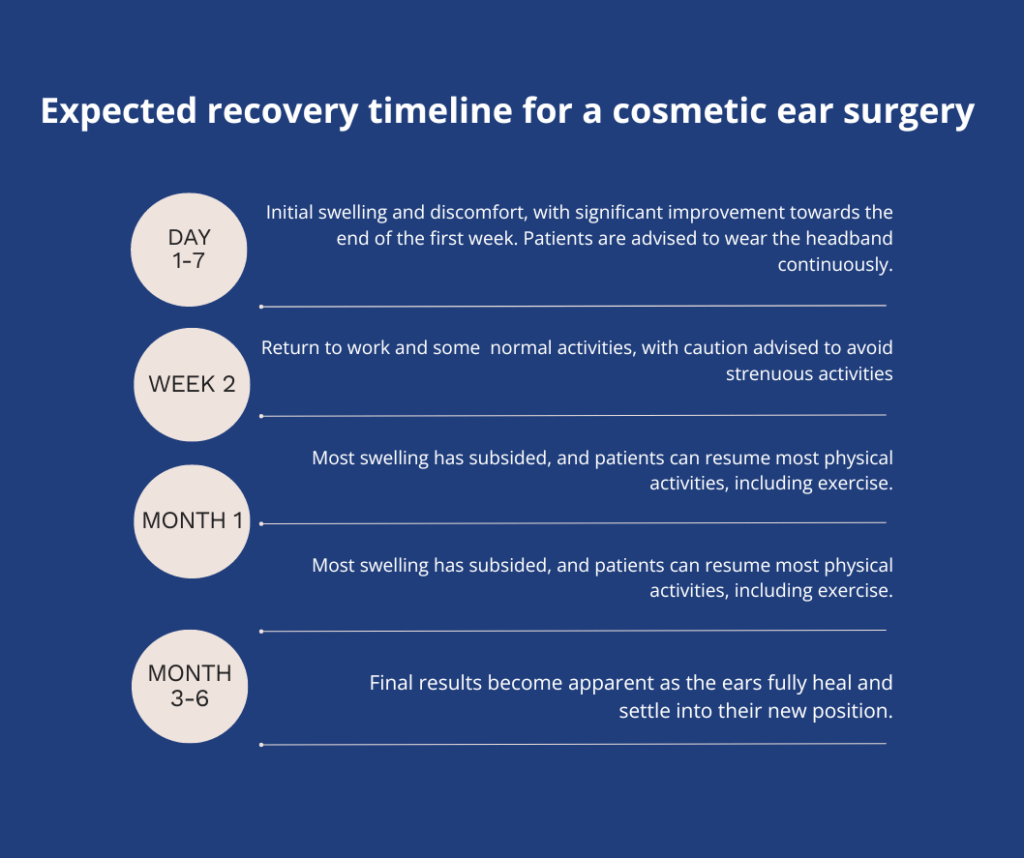
How do you manage pain and discomfort?
To manage pain and discomfort, the surgeon may prescribe a combination of painkillers and anti-inflammatory medications. Colombian clinics often recommend natural remedies and cold compresses to supplement pain management. Patients are provided with detailed instructions on medication schedules, how to apply cold compresses, and when to contact the clinic for any concerns regarding pain or healing.
Essential Recovery Items for Otoplasty in Colombia
Proper recovery equipment is crucial for optimal healing after otoplasty surgery in Colombia. These items help ensure comfort and protect your surgical results:
Required Protective Items
- Compression headband (“Balaca”) – Must be worn continuously for the first week, especially during sleep to protect ear positioning
- Soft, padded dressings – Applied immediately post-surgery and worn for the first few days
- Special ear protection – Cushioned supports to prevent pressure during sleep
- Button-front clothing – Avoid pulling garments over the head during recovery
Pain Management and Comfort Items
- Cold therapy options – Specialized cooling pads or gel packs designed for ear surgery
- Prescribed medications – Antibiotics, pain relievers, and anti-inflammatory drugs
- Natural remedy supplies – As recommended by Colombian clinics for supplemental healing
- Soft pillows – Multiple pillows to maintain proper head elevation during sleep
Unique Colombian Recovery Treatments
- Laser therapy equipment – Some clinics offer specialized laser treatments to reduce swelling
- Lymphatic drainage massage tools – Specialized post-surgical massage equipment
- Anti-fluid linens – Available at recovery hotels like 93 Luxury Suites
- 24/7 nursing care supplies – Provided by specialized medical tourism facilitators
Many all-inclusive packages in Colombia include these essential recovery items, while a la carte patients should budget for these additional expenses to ensure proper healing and optimal results.
What are the risks and considerations?
Undergoing otoplasty, like any surgical procedure, involves certain risks and considerations. Common complications include infection, bleeding, and asymmetry between ears. There’s also a possibility of scarring, though surgeons typically make incisions in less visible areas to minimize this risk.
Changes in skin sensation around the ears may occur, which are usually temporary. Patients must also consider the potential for dissatisfaction with the aesthetic outcomes, highlighting the importance of clear communication with the surgeon about expectations. Prior to surgery, a thorough discussion of these risks and an evaluation of the patient’s overall health are essential to ensuring the best possible outcomes.
What are common complications for otoplasty?
Common complications following otoplasty encompass infection, bleeding, and asymmetry between the ears, which are among the most frequently observed issues. Scarring is also a consideration, though surgeons aim to minimize its visibility through careful incision placement. Furthermore, patients may notice changes in skin sensation around the ears, which, while often temporary, can sometimes persist.
What factors affect otoplasty surgery success?
Several key factors influence the success of otoplasty surgery. The surgeon‘s expertise and experience play crucial roles, as do the patient‘s overall health and their body’s capacity to heal. Effective communication between the patient and surgeon about the desired outcomes is imperative.
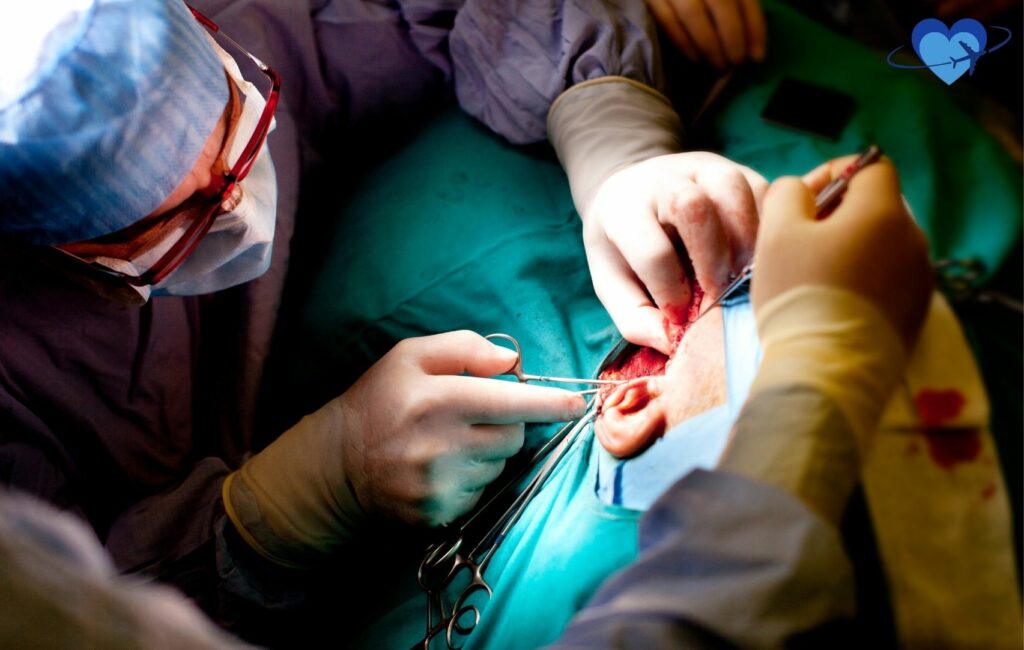
Additionally, the patient’s adherence to postoperative care instructions and the initial anatomical condition of the ears significantly impact the surgical results.
What results can you expect from otoplasty?
From otoplasty, patients can expect significant aesthetic improvements in the shape, size, and position of their ears, leading to enhanced facial harmony and symmetry. The procedure effectively addresses issues such as protruding ears and large or misshapen ears, creating a more balanced appearance. While results are typically long-lasting, patients should maintain realistic expectations, as final outcomes may take several months to fully manifest due to the healing process.
Overall, satisfaction levels are high among patients, many of whom experience a significant boost in self-confidence and comfort with their appearance post-surgery.
How do you prepare for surgery?
Preparing for surgery involves a series of essential steps to ensure safety and optimize outcomes. Initially, patients must undergo a comprehensive medical evaluation to assess their overall health and identify any factors that could impact the surgery or recovery process. Adjustments to medications may be necessary, and it’s crucial to avoid substances like alcohol and tobacco, which can hinder the healing process.
Additionally, patients should arrange for postoperative care and transportation, ensuring they have the support needed during the recovery phase. Adhering closely to the surgeon’s preoperative instructions, including fasting guidelines, is vital for a successful procedure and minimizing any associated risks.
What medical tests are required?
Before undergoing surgery, patients are typically required to complete medical tests, including blood tests, to identify any underlying conditions that could complicate the procedure or anesthesia. An electrocardiogram (ECG) may be necessary for individuals with heart-related issues. Additionally, imaging tests of the ears can be conducted to aid in detailed surgical planning.
What lifestyle adjustments are necessary?
Prior to surgery, necessary lifestyle adjustments include quitting smoking and abstaining from alcohol, as both can negatively impact healing and recovery processes. It’s also important to discontinue certain medications and supplements known to increase bleeding risks, such as aspirin or ibuprofen, according to the surgeon’s timeline.
What are the preoperative instructions?
Pre-operative instructions generally cover fasting for 6 to 12 hours before the procedure, depending on the anesthesia type. Patients should also prepare their recovery space at home, ensuring they have a comfortable area to rest with easy access to needed items. Guidance on what to wear the day of surgery is provided, emphasizing loose, comfortable clothing that doesn’t require pulling over the head.
Complete Pre-Surgery Checklist for Otoplasty in Colombia
Follow this comprehensive checklist to ensure you’re fully prepared for your otoplasty procedure in Colombia:
Medical Preparation (2-4 weeks before surgery)
- Complete blood tests – Check for conditions that might complicate surgery
- Electrocardiogram (ECG) – Required for patients with heart conditions
- Audiometry testing – Assess hearing baseline before surgery
- Purchase complication insurance – SURA, Pan American Life, or BMI Seguros policies
- Schedule virtual consultation – Discuss goals and surgical plan
Lifestyle Adjustments (2 weeks before surgery)
- Stop smoking completely – Improves healing and reduces complications
- Avoid alcohol consumption – Enhances recovery process
- Discontinue blood-thinning medications – Aspirin, ibuprofen, certain supplements
- Arrange post-operative care – Travel companion, recovery accommodation
- Book recovery hotel – Specialized facilities like 93 Luxury Suites in Bogotá
Day Before Surgery
- Begin fasting period – 6-12 hours before surgery (as instructed)
- Prepare recovery space – Comfortable area with easy access to essentials
- Confirm transportation – Airport transfers and clinic appointments
- Pack surgery day outfit – Loose, button-front clothing
Essential Items to Bring
- Medical documents – Insurance policy, test results, prescription list
- Identification – Valid passport (6 months validity remaining)
- Contact information – Surgeon’s office, emergency contacts
- Translation assistance – Download apps or arrange interpreter services
How much does otoplasty cost in Colombia?
The average cost of otoplasty in Colombia ranges from $900 to $1,800 USD. On average, patients may expect to pay a fraction of what they would in North America or Europe, with a broad price range designed to accommodate a variety of patient needs and specific surgical requirements. This represents a savings of 50-70% compared to the United States where the procedure can cost upwards of $4,300 USD.
What factors affect the cost of otoplasty in Colombia?
Several key factors influence the cost of otoplasty in Colombia, including:
- Procedure’s Complexity: Each patient’s unique needs and the extent of correction required can significantly affect the price.
- Surgeon‘s Expertise and Reputation: More experienced and highly regarded surgeons typically command higher fees.
- Healthcare Facility Quality and Location: State-of-the-art clinics, especially those in major cities, may have higher charges.
- Type of Anesthesia Used: The choice between local and general anesthesia can impact the overall cost.
- Additional Treatments or Services: Any supplementary procedures or services required for achieving the best results can also contribute to the final cost.
These factors combined determine the overall expense of undergoing otoplasty for patients seeking this procedure in Colombia.
What are the otoplasty combination package options in Colombia?
Colombian surgeons offer comprehensive facial harmony packages that combine otoplasty with other complementary procedures to achieve optimal aesthetic results while maximizing cost savings and recovery efficiency.
Otoplasty + Rhinoplasty Packages
The most popular combination is otoplasty with rhinoplasty, offering significant advantages:
- Single operative event – One anesthesia administration, one facility fee
- Combined recovery period – Healing processes don’t interfere with each other
- Cost savings of 20-30% compared to separate procedures
- Total surgery time ideally under 5 hours for safety
Surgeons like Dr. Julio César Acosta in Bogotá specialize in both procedures, ensuring expertise in facial harmony principles.
Facial Rejuvenation Packages
Comprehensive packages may include otoplasty combined with:
- Blepharoplasty (eyelid surgery) for complete facial enhancement
- Facelifts and neck lifts for comprehensive aging reversal
- Mentoplasty (chin enhancement) for facial balance
- Bichectomy (cheek reduction) for facial contouring
Mommy Makeover Packages
Many international patients include otoplasty as part of mommy makeover packages, combining ear correction with body contouring procedures. Colombian clinics report an average of 2.7 procedures per patient, making combination packages highly popular.
All-inclusive packages through facilitators start from approximately $8,100 USD for combined facial procedures, offering significant value compared to staging surgeries separately.
How do you select a surgeon in Colombia?
Selecting a surgeon in Colombia for otoplasty involves a meticulous approach to ensure optimal outcomes. First, verify the surgeon’s credentials, including board certification and affiliations with reputable medical associations, to confirm their expertise. Assess the surgeon’s experience in otoplasty, prioritizing specialists with a successful track record.
Review before-and-after photos of their previous patients to gauge the surgeon’s aesthetic style and results. Consider patient testimonials and reviews to gain insights into their experiences and satisfaction levels. Lastly, during the consultation, evaluate the surgeon’s ability to communicate effectively and understand your aesthetic goals.
Checklist for evaluating a surgeon’s qualifications and experience
To ensure a comprehensive evaluation of a surgeon’s qualifications and experience for otoplasty in Colombia, consider the following detailed checklist:
|
Criteria |
Description |
Why It’s Important |
|
Board Certification |
Verify the surgeon is certified by recognized medical boards such as the Colombian Society of Plastic, Aesthetic and Reconstructive Surgery. |
Confirms the surgeon has met rigorous standards of education, training, and ethics. |
|
Specialization and Experience |
Confirm the surgeon’s specialization in otoplasty and years of experience. |
Specialization ensures the surgeon has focused skills in ear surgery; experience indicates a history of practice and familiarity with various case complexities. |
|
Before-and-After Photos |
Review the surgeon’s portfolio of before-and-after photos of previous otoplasty patients. |
Provides visual evidence of the surgeon’s aesthetic judgment and skill level, helping set realistic expectations. |
|
Patient Testimonials |
Read or listen to testimonials from the surgeon’s previous patients. |
Offers insights into patient satisfaction, care quality, and personal experiences with the surgeon and their team. |
|
Professional Affiliations |
Check for membership in reputable medical associations or societies. |
Indicates the surgeon’s commitment to staying updated with the latest practices and standards in cosmetic surgery. |
|
Continuing Education |
Investigate the surgeon’s participation in ongoing education or training. |
Ensures the surgeon is current with the latest techniques and advancements in otoplasty. |
|
Consultation Experience |
Assess the quality of your consultation, including the surgeon’s ability to listen and provide clear, comprehensive responses. |
A productive consultation experience is indicative of the surgeon’s approachability, communication skills, and understanding of patient needs. |
|
Safety Record and Complication Rates |
Inquire about the surgeon’s safety record, including complication rates with otoplasty procedures. |
A strong safety record and low complication rates are critical for ensuring the surgeon prioritizes patient well-being and successful outcomes. |
Utilizing this checklist will help ensure that you select a highly qualified and experienced surgeon for your otoplasty procedure in Colombia, thereby maximizing your chances of achieving the best possible results.
Which is the best city in Colombia for Ear Lifts (aka Otoplasty) surgery?
The best cities to travel to for ear lifts (otoplasty) in Colombia are Medellín, Bogotá, and Cartagena, each offering top-tier cosmetic surgery clinics, JCI-accredited facilities, and experienced SCCP-certified specialists.
Top Otoplasty Clinics in Medellín
Otoplasty in Medellín is performed at premier facilities concentrated in the affluent El Poblado neighborhood. Key locations include:
- Torre Médica El Tesoro – Houses Quirófanos El Tesoro surgical center
- Dr. Juan Fernando Gómez – Torre Médica 2, Consultorio 1655
- Dr. Juan David Londoño (SCCP certified) – Consultorio 1529, Tel: +57 (4) 448 4896
- Dr. Edgar Felipe Diaz – Consultorio 1511
- Dr. David Delgado (SCCP & American Society certified) – Operates at JCI-accredited IQ Interquirófanos
Top Otoplasty Clinics in Bogotá
Otoplasty in Bogotá is offered at sophisticated healthcare facilities in the northern districts:
- Dali Medical Center – Premier plastic surgery facility
- Clínica Corpolaser – Carrera 13 A No. 102 – 86, Chicó district
- Fundación Santa Fe de Bogotá – JCI-accredited hospital
- Specialized surgeons include Dr. Marco Martínez and Dr. Juan Carlos Monroy (male otoplasty specialist)
Top Otoplasty Clinics in Cartagena
Otoplasty in Cartagena combines surgical excellence with coastal recovery:
- Premium Care Plastic Surgery – Carrera 3 No 7 – 166 Local 9, Bocagrande
- Dr. Alex Campbell, Dr. Mauricio Herrera, Dr. Tatiana Luna
- Team of 4 board-certified surgeons with over 10,000 procedures
- All-inclusive packages with luxury Recovery Suites
Each city offers distinct advantages: Medellín for cutting-edge technology and concentration of specialists, Bogotá for the capital’s extensive healthcare infrastructure, and Cartagena for luxury medical tourism experiences with beachside recovery.
How do you travel to Colombia for surgery?
To travel to Colombia you must initially, conduct thorough research to select a reputable medical tourism agency or directly engage with a healthcare facility in Colombia known for offering high-quality otoplasty services. Arrange for an initial consultation, which can often be conducted virtually, to discuss your surgical needs and expectations.
Ensure your passport is valid and investigate any visa requirements for entry into Colombia. It’s also wise to secure travel health insurance that covers medical procedures abroad. Carefully plan your travel itinerary to include ample time both before and after the surgery for necessary consultations and adequate recovery.
Lastly, consider potential language barriers; while many major medical centers in Colombia have English-speaking staff, employing a translator for the duration of your stay can significantly enhance communication with your healthcare providers and improve your overall experience. To provide detailed practical advice on travel arrangements, the following markdown table is added:
Insurance and Legal Protections for International Patients
Colombia offers comprehensive legal protections and specialized insurance options specifically designed for international medical tourists:
Colombian Complication Insurance Policies
- SURA – Póliza de Complicaciones: 30 days post-op coverage, covers medical expenses for infections, hematomas, thrombosis (excludes aesthetic dissatisfaction)
- Pan American Life (PALIG) – 45 days post-op coverage, comprehensive medical and hospital expenses for complications
- BMI Seguros Colombia – Reimburses up to $20,000 USD for high-complexity procedure complications
SCCP Certification and Legal Compliance
Verify surgeon credentials through the Colombian Society of Plastic, Aesthetic and Reconstructive Surgery (SCCP) and the official government database RETHUS (Registro Único Nacional del Talento Humano en Salud):
- SCCP Membership – Ensures rigorous training standards and ethical practice
- RETHUS Verification – Government database confirming active medical licenses
- International Affiliations – Many Colombian surgeons hold American Society of Plastic Surgeons membership
JCI Accreditation Standards
Joint Commission International (JCI) accredited facilities in Colombia meet the highest global healthcare standards:
- IQ Interquirófanos, Medellín – Where Dr. David Delgado operates
- Fundación Santa Fe de Bogotá – Premier capital city facility
- Hospital Pablo Tobón Uribe, Medellín – Leading medical center
- Hospital Internacional de Colombia, Bucaramanga – Regional excellence center
Legal Recourse and Patient Rights
International patients have full legal protections under Colombian healthcare regulations:
- Medical Malpractice Laws – Full legal recourse through Colombian courts
- Consumer Protection – Healthcare consumer rights enforced by Colombian authorities
- Medical Tourism Regulations – Specialized protections for international medical visitors
- Embassy Support – Your country’s embassy can provide assistance with medical tourism disputes
Important: Standard travel insurance and home country health insurance (including U.S. Medicare/Medicaid) typically do NOT cover elective surgery abroad. Colombian complication insurance is essential for complete protection.
|
Step |
Detail |
Recommendations |
Notes |
|
1. Selecting a Medical Facility |
Choose a reputable clinic or hospital. |
Research facilities with strong otoplasty programs. |
Look for JCI-accredited institutions for higher standards. |
|
2. Virtual Consultation |
Schedule a meeting with your surgeon. |
Use video conferencing tools provided by the clinic. |
Discuss your goals, expectations, and any medical concerns. |
|
3. Travel Documentation |
Ensure passport validity and check visa requirements. |
Passport should be valid for at least 6 months beyond your stay. |
Citizens of many countries can enter Colombia visa-free for up to 90 days. |
|
4. Health Insurance |
Obtain travel health insurance that covers overseas procedures. |
Compare plans that specifically include medical treatment coverage abroad. |
Ensure the policy covers complications from otoplasty if possible. |
|
5. Flights and Accommodation |
Book flights and accommodation near the medical facility. |
Consider staying in a recovery hotel that caters to medical tourists. |
Many clinics have partnerships with hotels offering special rates and services. |
|
6. Language Preparation |
Address potential language barriers. |
Download translation apps or arrange for a translator through the medical facility. |
English is widely spoken in major cities, but less so in rural areas. |
|
7. Local Transportation |
Plan for getting around the city. |
Research safe transportation options like reputable taxi services or ride-sharing apps. |
Ask your medical provider for recommendations on trusted services. |
|
8. Currency and Payments |
Understand the local currency and payment methods. |
Colombian Peso (COP) is the local currency. Credit cards are widely accepted, but have some cash for smaller expenses. |
Inform your bank of your travel plans to avoid any card issues. |
|
9. Post-Surgery Care |
Arrange for post-operative care and support. |
Confirm with your clinic if they provide or recommend post-surgery care services. |
Consider bringing a travel companion for additional support. |
|
10. Cultural Considerations |
Be aware of local customs and holidays. |
Respect local traditions and plan your trip considering national holidays when services may be limited. |
Colombia is known for its warm hospitality and vibrant culture. |
Frequently asked questions about otoplasty in Colombia
When considering otoplasty in Colombia, many prospective patients have questions regarding the procedure, outcomes, and the logistics of traveling for surgery. Common inquiries often include the cost of otoplasty in Colombia, highlighting the affordability and exceptional value compared to other countries. Patients are also keen to learn about the qualifications of surgeons, seeking reassurance on the expertise and experience of Colombian medical professionals.
What is the difference between an ear lift and otoplasty?
An ear lift is typically aimed at addressing signs of aging around the ears, while otoplasty encompasses a wider range of surgical techniques designed to correct the ears’ shape, size, or position for aesthetic and functional improvements.
How much does otoplasty cost in Colombia?
Otoplasty in Colombia is notably more affordable compared to many other countries. The cost varies depending on factors like the procedure’s complexity, the surgeon’s expertise, and the healthcare facility’s standards, with patients often paying a fraction of what they would in North America or Europe.
What types of cosmetic surgery is Colombia known for?
Colombia is renowned for its expertise in a broad array of cosmetic surgeries, including liposuction, breast augmentation, rhinoplasty, and otoplasty, offering high-quality care and exceptional surgical outcomes.
What are the qualifications of surgeons performing otoplasty in Colombia?
Surgeons in Colombia specializing in otoplasty are generally board-certified, with extensive training in plastic and reconstructive surgery. Many hold memberships in prestigious medical associations and possess international experience, adhering to global standards of excellence.
How long does recovery from otoplasty surgery take in Colombia?
The initial recovery period from otoplasty surgery in Colombia is about 1 to 2 weeks, with most patients resuming normal activities shortly after. Complete healing and final results can take several months to fully manifest.
What are the risks associated with undergoing otoplasty in Colombia?
Undergoing otoplasty involves risks such as infection, bleeding, asymmetry, and potential dissatisfaction with the aesthetic results. Choosing a qualified surgeon and adhering to all care instructions can significantly mitigate these risks.
How does the cost of otoplasty in Colombia compare to other countries?
The cost of otoplasty in Colombia is significantly lower than in many other countries, making it an attractive option for individuals seeking affordable, high-quality cosmetic surgery without compromising on care or outcomes. In Colombia, otoplasty costs range from $900 to $1,800 USD, representing a savings of 50-70% compared to the United States where the procedure can cost upwards of $4,300 USD. Compared to Mexico ($1,400-$3,000 USD) and Brazil (20-30% higher than Colombia), Colombia offers the most competitive pricing in the region.
What should patients expect in terms of results from otoplasty surgery in Colombia?
Patients can anticipate significant aesthetic improvements in their ears’ appearance post-otoplasty in Colombia, with outcomes designed to enhance facial harmony and boost self-esteem. The results are long-lasting, offering a profound and positive impact on the patient’s quality of life.
Which countries are best for otoplasty?
Colombia ranks among the top destinations worldwide for otoplasty, alongside Mexico and Turkey, according to the International Society of Aesthetic Plastic Surgery (ISAPS). Colombia’s advantages include SCCP-certified surgeons, JCI-accredited facilities, significantly lower costs (50-70% less than the U.S.), and a mature medical tourism infrastructure. As many as 30% of all plastic surgery patients in Colombia are international visitors, primarily from the United States, Spain, and Canada, drawn by the combination of high quality and significant cost savings.
Is it safe to get plastic surgery in Colombia?
Yes, plastic surgery in Colombia is safe when performed by certified surgeons in accredited facilities. Look for surgeons certified by the Colombian Society of Plastic, Aesthetic and Reconstructive Surgery (SCCP) and facilities with Joint Commission International (JCI) accreditation. Key JCI-accredited facilities include IQ Interquirófanos in Medellín, Fundación Santa Fe de Bogotá, and Hospital Pablo Tobón Uribe. Additionally, Colombia offers specialized complication insurance policies for foreign patients through providers like SURA, Pan American Life, and BMI Seguros, providing coverage for medical complications for up to 45 days post-surgery.
Take the first step toward your transformation today! Colombia’s leading otoplasty surgeons are ready to help you achieve the natural-looking results you’ve always wanted. Contact SCCP-certified specialists for your complimentary virtual consultation and join the thousands of satisfied international patients who chose Colombia for their ear enhancement journey.
Ready to begin? Contact our featured surgeons directly or reach out to medical tourism facilitators for comprehensive all-inclusive packages. Your path to renewed confidence starts with a simple consultation.



